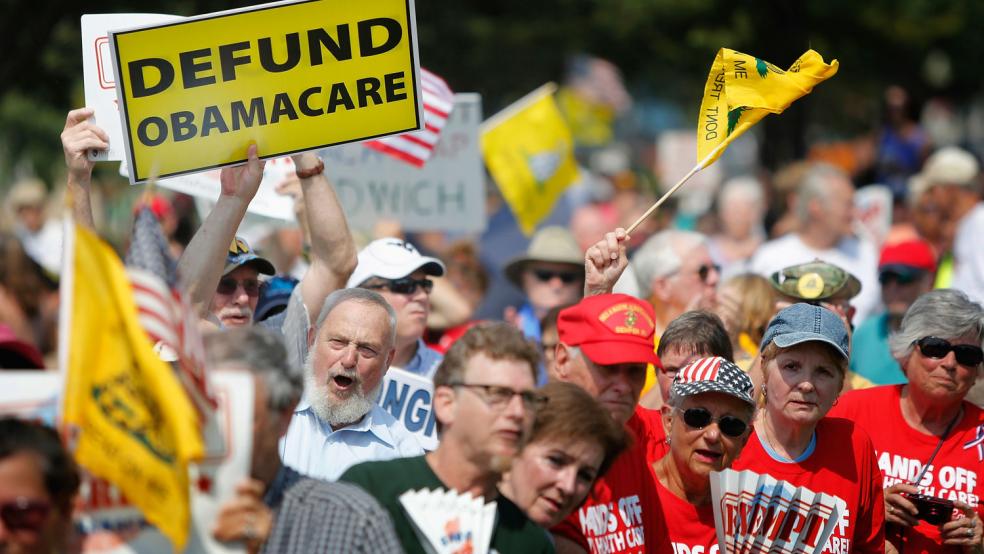Had a sinking feeling about the economy of late? It may not be your imagination. Economic indicators have flashed yellow for much of 2016, and the latest jobs report shows further depletion of the work force and a dearth of job creation. That trend, says one major bank, may be attributable to President Barack Obama’s signature legislation.
Last Friday, the Bureau of Labor Statistics (BLS) released the worst jobs report in almost six years. The US economy only added 38,000 jobs, less than a tenth of the estimated 458,000 Americans who left the workforce. In fact, thanks to revisions made to the March and April reports, that exceeds the number of jobs created in the past three months (348,000) by more than 100,000. The workforce participation rate dropped back to 62.6 percent, near a 40-year low, and more than three full points below its level at the start of the recovery in June 2009 (65.7 percent).
Related: Get Ready for Huge Obamacare Premium Hikes in 2017
To call this a wide miss is an understatement. Economists had predicted a moderate jobs gain, with Reuters forecast. The unemployment rate dropped to 4.7 percent, but analysts widely noted that this was a result of the large exodus from the workforce. That included an increase of 130,000 among those who have left the workforce but still desire employment, outnumbering the jobs added in May.
The news on jobs might possibly be worse than even this indicates. An economist at Johns Hopkins called into question the seasonal adjustment calculations used by the BLS. Jonathan Wright recalculated the data and concluded that the economy had lost 4,000 jobs. Instead of a three-month average jobs gain of 116,000 – well below the 131,000-jobs-added level needed to keep up with population growth at a workforce participation rate of 62.6 percent -- the three-month average was actually 107,000, and 114,000 for all of 2016.
On top of that, the second estimate of first-quarter GDP growth came in at an annualized rate of 0.8 percent, just short of contraction. The jobs market and the economy have both stalled. We have not experienced annual GDP growth above 2.5 percent in any year since recovery began in June 2009, making this the weakest recovery in the post-war period.
Related: Obamacare: Costs Go Up, Insurers Drop Out and Consumers Get Screwed
One data point in particular might give at least some indication why. The number of part-time workers in jobs for economic reasons shot up by 468,000, apart from the 458,000 that left the workforce altogether. Slack work or business conditions accounted for 181,000 of these jobs, while another 77,000 could only find part-time work.
Analysts at Goldman Sachs have noticed this trend for some time, and put the blame on Obamacare.
“The evidence suggests that the [Affordable Care Act] has at least modestly elevated involuntary part-time employment,” Goldman Sachs economist Alec Philips wrote in a research note published on Wednesday. Obamacare had the greatest impact on industries that traditionally do not offer strong health insurance coverage, such as retail stores and the hospitality industry. Phillips noted that these have the highest levels of involuntary part-time workers, and believes that the ACA has forced “a few hundred thousand” to take cuts in hours or accept part-time work as a result.
That may not seem like a high number, given the amount of people in the US workforce. However, as we approach the seventh anniversary of the Obama recovery, the continued rise in involuntary part-time workers demonstrates a fundamental weakness in the economy, Phillips argues. As Joseph Lawler noted for The Washington Examiner, the number of people forced into part-time work has grown by over 600,000 people in the last seven months. It’s not getting better – it’s getting worse.
Related: UnitedHealth Makes Good on Threat to Pull Out of Obamacare
One key area has grown exponentially in the recovery period, though – regulation at every level. Hudson Institute fellow Marie-Josée Kravis wrote in Friday’s Wall Street Journal that federal regulation twists incentives and punishes small businesses, which provides the engine of job creation in the American economy. In 2010, Kravis notes, federal regulation put a burden on small businesses that cost 20 percent more than it did large companies, thanks to economies of scale.
Obamacare makes that situation even worse. Larger companies can distribute the costs of increased health insurance costs and the employer mandate more broadly. Smaller employers, which have less market clout and smaller room for error, feel the shock of the employer coverage mandate more directly. The ACA directly incentivizes employers to use part-time rather than full-time workers, and smaller businesses have the necessity of grasping at any competitive advantage they can get. Six years after its passage and almost three years after its implementation, Goldman Sachs still sees Obamacare as a prime driver of forced part-time employment.
As Kravis concludes, what we have been doing for the last seven years of the weakest recovery on record clearly hasn’t worked. It’s time to try something new – like getting rid of job-killing regulation, with Obamacare first on the list to go.






